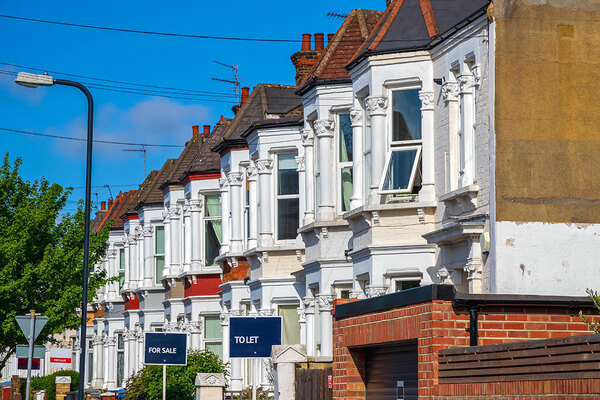You are viewing 1 of your 1 free articles
Now is the time to fix the broken housing system
Shifts in the housing market in recent decades have left too many reliant on the private rented sector. The current crisis offers a chance for a rebalancing, writes Paul Hackett
The recent announcement encouraging councils to drop planning gain for affordable homes marks the start of the government’s housing kick-start programme.
Ministers want a speedy return to the status quo. But ‘back to the future’ cannot address the root problem of unaffordability and risks greater reliance on a private rented sector (PRS), which is ill-suited and ill-equipped to cope with a housing crisis.
The last pump priming of the housing market after the 2008 financial crisis saved the house builders but did little to help the growing number of struggling renters. In fact, over the next 12 years the number of households under the most housing stress increased and homeownership fell.
As the Affordable Housing Commission’s recent report, Making housing affordable again, shows, a different path is now possible if ministers intervene and start to shift the tenure – in new and existing markets – towards public housing and reform the fragmented and expensive PRS. Affordability will improve and more young people will be able to save to buy.
The emergency protection for buyers and renters have been widely welcomed, but the legislation is only a temporary fix. Special measures will have to be reconfigured as the country moves from crisis management to recovery. This presents an opportunity to tackle the root causes of housing unaffordability.
The affordable housing crisis is home-made and was overseen by both Labour and Conservative administrations. At its source are two important and inter-related tenure changes: a dramatic and largely unregulated growth of the PRS – which has more than doubled in size in less than 20 years – and a deliberate and persistent disinvestment in social housing, including a sharp reduction in housing subsidies for low-cost housing, a switch from social rents to lettings at higher rents, and the sale of some two million council homes under the Right to Buy scheme.
“Special measures will have to be reconfigured as the country moves from crisis management to recovery. This presents an opportunity to tackle the root causes of housing unaffordability”
Today, the social housing sector is half what it was at its peak in the 1980s – shrunk down from three times the size of the PRS. Households in the PRS have meanwhile nearly doubled since 2007 to over 4.5 million, making it the second largest sector after owner-occupiers. There are now more professional landlords, but much of the PRS is still made up of ‘amateur’ landlords – over 1.2 million of which own one to five properties.
The expansion of the PRS (with buy-to-let lending increasing from £9.1bn in 2000 to £240bn in 2017) has changed Britain’s property owning profile, consolidating housing wealth among the ‘housing haves’ and often ‘pricing out’ potential first-time buyers and pushing up house prices.
It has also spawned a new, older ‘generation rent’, many of whom – if they are still renting privately when they retire – are likely to face serious housing difficulties.
The biggest and most damaging impact of the rise of the PRS has been on low-income households. Over 40% of private renters now live in poverty and a growing number of them are over 45. For many in the bottom half of the income distribution, this tenure shift has been devastating: 20 years ago social rented housing provided 36% of homes for this half of the population and the PRS housed 12%.
By 2017, social rented housing was down to 28% and the PRS had grown to 22%. If the trend continues, the social rented sector is forecast to shrink by a further 400,000 homes to just 11% by 2045. The net result will be even more vulnerable households reliant on the PRS and an even higher housing benefit bill.
The pandemic highlights the costs and consequences of relying on a PRS. As Lord Best, chair of the Affordable Housing Commission, commented in recent evidence to the commons select committee: “The social housing sector has the capability and organisation to rise to the challenges that the crisis brings, the position for many private tenants and private landlords is much more fraught.”
Some private landlords will allow ‘rent holidays’ and show forbearance, but others that rely on rents for all or part of their income may have no option to evict if tenants can not pay and the benefit system falls short. The government has recently increased the housing allowance to support private tenants and promised added (‘pre-action protocol’) protection.
“Social landlords should be helped to step in – as they have done in the past – and provide more genuinely affordable homes”
However, it is unclear how effective this will be or how far – and for how long – the benefit system will be stretched to compensate private landlords whose rents far exceed social rents. A rent freeze would be welcomed by many renters, but doesn’t solve the root problem.
Social landlords should be helped to step in – as they have done in the past – and provide more genuinely affordable homes. There is an opportunity to build more affordable homes offsite – as suggested by the G15 group of London’s largest housing associations – and to fund the conversion of PRS properties to social tenancies, with safeguards in place for existing tenants and landlords.
This is also the time for councils across the country to get building again at scale, using enhanced compulsory purchase powers and extra borrowing capacity where necessary. Extra help could also be made available to community organisations so they can acquire empty and low-quality property to regenerate neighbourhoods. These measures alongside the continued withdrawal of financial incentives to private landlords could start to reverse the tenure shift.
Boosting the supply of social and affordable housing makes sense as a counter-cyclical measure. Besides the economic benefits, it lowers the housing benefit bill and reduces housing poverty. It will also crucially alter the tenure mix.
Government is right to intervene in the current crisis, and what once seemed too radical now seems possible. Now is the time to look long term and rebalance the housing market for the public good.
Paul Hackett, director, The Smith Institute; and secretary, Affordable Housing Commission











